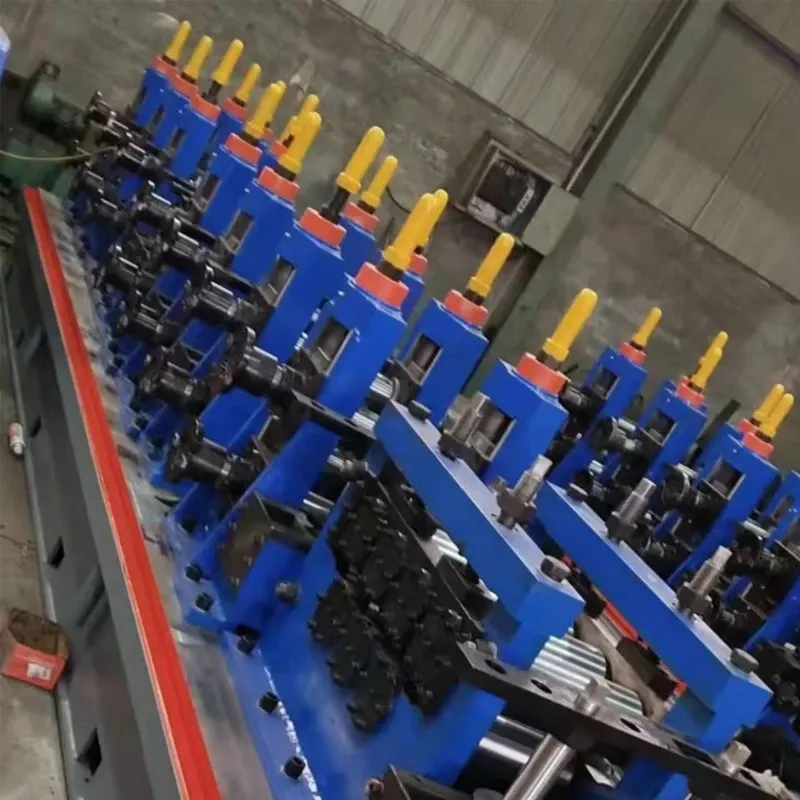Innovations in Welded Gas Pipe Technology
The pipeline industry relies on advanced manufacturing techniques to ensure durability, efficiency, and safety in fluid transportation systems. Among the most critical components are welded gas pipe, linepipe, pyplyn produkte, en high frequency welded tube. These products form the backbone of modern infrastructure, serving oil and gas networks, water distribution systems, and industrial applications. This comprehensive guide examines their manufacturing processes, key advantages, and answers common technical questions.

The Strength of Welded Gas Pipe
Welded gas pipe represents a fundamental solution for transporting natural gas and other combustible fuels safely over long distances. Manufactured through either electric resistance welding (ERW) or submerged arc welding (SAW) processes, these pipes undergo rigorous testing to withstand high pressure and extreme environmental conditions. The welding process creates continuous seams that maintain structural integrity while allowing for cost-effective production in various diameters. Modern coatings like fusion-bonded epoxy provide additional corrosion resistance, extending service life in underground or marine installations.
Essential Applications of Linepipe
Linepipe serves as the primary conduit in cross-country pipeline networks, designed to meet stringent international standards for strength and reliability. These pipes typically feature thicker walls than standard piping to handle the demands of high-pressure transmission. Advanced metallurgical compositions, including API 5L grades, ensure optimal performance in arctic cold or desert heat. The manufacturing process incorporates non-destructive testing methods such as ultrasonic inspection to guarantee weld quality throughout the pipe's length.
Diverse Solutions in Pipe Line Products
The category of pyplyn produkte encompasses fittings, flanges, valves, and specialized connectors that complete pipeline systems. These components undergo matching quality controls to maintain system integrity at connection points. Forged steel fittings provide leak-proof transitions between pipe sections, while composite materials offer lightweight alternatives for certain applications. The industry continues developing smart pipeline products with embedded sensors for real-time monitoring of pressure, flow rates, and potential integrity threats.
Precision Manufacturing of High Frequency Welded Tube
High frequency welded tube production represents a technological leap in creating precise, thin-walled tubular products. The HFW process uses alternating current to generate localized heat at the seam, producing cleaner welds than conventional methods. This technique excels in manufacturing structural components for automotive frames, furniture, and mechanical systems. The process allows for tight dimensional tolerances and excellent surface finishes, often eliminating the need for secondary machining operations.
FAQS About Modern Pipeline Technologies
What distinguishes welded gas pipe from seamless alternatives in high-pressure applications?
While both welded gas pipe and seamless pipes serve high-pressure systems, their manufacturing differences create distinct performance characteristics. Welded pipes offer more consistent wall thickness throughout long sections, crucial for pipeline projects requiring uniform strength. The welding process allows for larger diameters than typically achievable with seamless manufacturing. Modern welding techniques have closed the strength gap between welded and seamless products, with properly manufactured welded pipes demonstrating equivalent burst pressure ratings. Quality control measures including hydrostatic testing and X-ray inspection ensure welded joints meet or exceed application requirements.
How does climate affect material selection for linepipe in extreme environments?
Linepipe specifications must account for temperature extremes that impact material behavior. Arctic installations require special steel grades with enhanced low-temperature toughness to prevent brittle fracture in sub-zero conditions. Desert environments demand coatings that resist UV degradation and sand abrasion. Manufacturers develop specialized metallurgical compositions, often adding nickel or other alloys to maintain ductility across temperature ranges. Pipeline engineers conduct thorough environmental assessments to determine appropriate wall thickness, coating systems, and cathodic protection requirements for each project's climatic challenges.
What quality certifications apply to pipe line products for international projects?
Pyplyn produkte destined for international infrastructure projects typically require multiple certifications demonstrating compliance with regional and industry standards. Common certifications include API (American Petroleum Institute), ISO 3183 for pipeline transportation systems, and ASME B16 standards for fittings and flanges. Products may also need PED (Pressure Equipment Directive) certification for European markets or GOST-R for Russian projects. Manufacturers maintain comprehensive quality management systems, often achieving ISO 9001 certification to validate consistent production standards across all pipeline components.
Why has high frequency welded tube gained popularity in structural applications?
Die high frequency welded tube process offers several advantages that explain its growing structural use. The concentrated heat input minimizes distortion and heat-affected zones, preserving base material properties near the weld. This results in tubes with more consistent mechanical characteristics compared to traditional welding methods. The process accommodates various steel grades while maintaining excellent dimensional accuracy, critical for prefabricated structures requiring precise fit-up. Additionally, HFW tubes demonstrate superior fatigue resistance, making them ideal for dynamic load applications like vehicle chassis or construction equipment.
What innovations are emerging in pipeline joining techniques for welded gas pipe systems?
Recent advancements in joining welded gas pipe sections focus on improving installation speed and long-term reliability. Automated welding systems now incorporate laser guidance and real-time monitoring to ensure perfect root passes in field joints. Friction stir welding shows promise for certain applications, creating low-distortion connections without melting the base material. Composite coupling systems allow for quick connections without hot work in hazardous areas. The industry also develops "smart girth welds" with embedded sensors that continuously monitor joint integrity throughout the pipeline's operational life.
This examination reveals how welded gas pipe, linepipe, pyplyn produkte, en high frequency welded tube collectively advance pipeline technology. Through continuous material science improvements and manufacturing innovations, these components meet the evolving demands of global energy infrastructure and industrial applications.
-
Precision Cutting Machinery: From Low-Speed Saws to Advanced Flying ShearsNuusAug.26,2025
-
Machinery for Pipe Fabrication: From Welding to CuttingNuusAug.26,2025
-
Leading Manufacturers of Pipe and Tube MachineryNuusAug.26,2025
-
Key Manufacturers of Tube and Pipe Processing MachineryNuusAug.26,2025
-
Best Machinery for Metal Pipe Fabrication: Cutting, Rolling, and WeldingNuusAug.26,2025
-
Advanced Cutting Solutions: Exploring CNC Cold Saws and Flying Saws for Industrial NeedsNuusAug.26,2025


